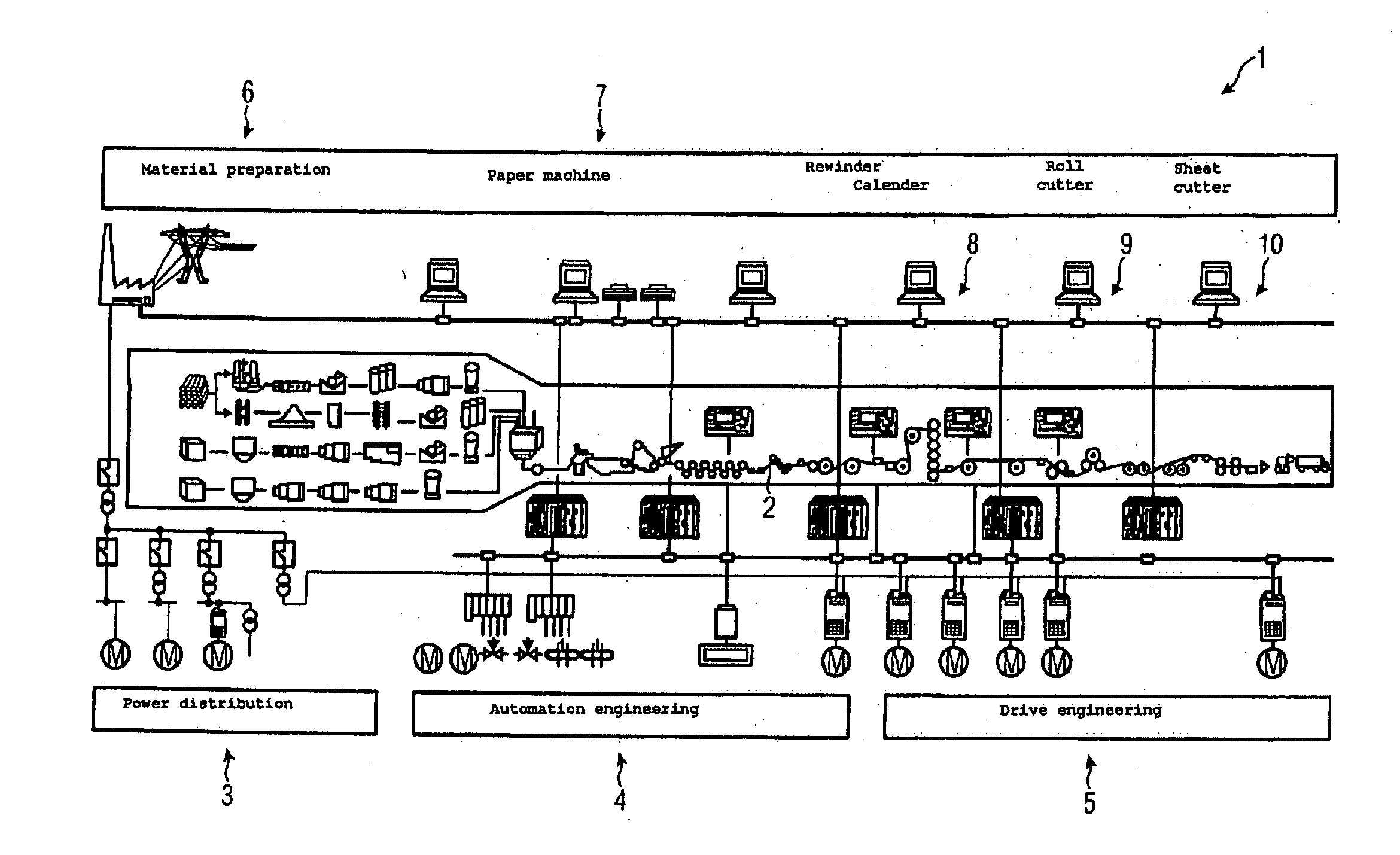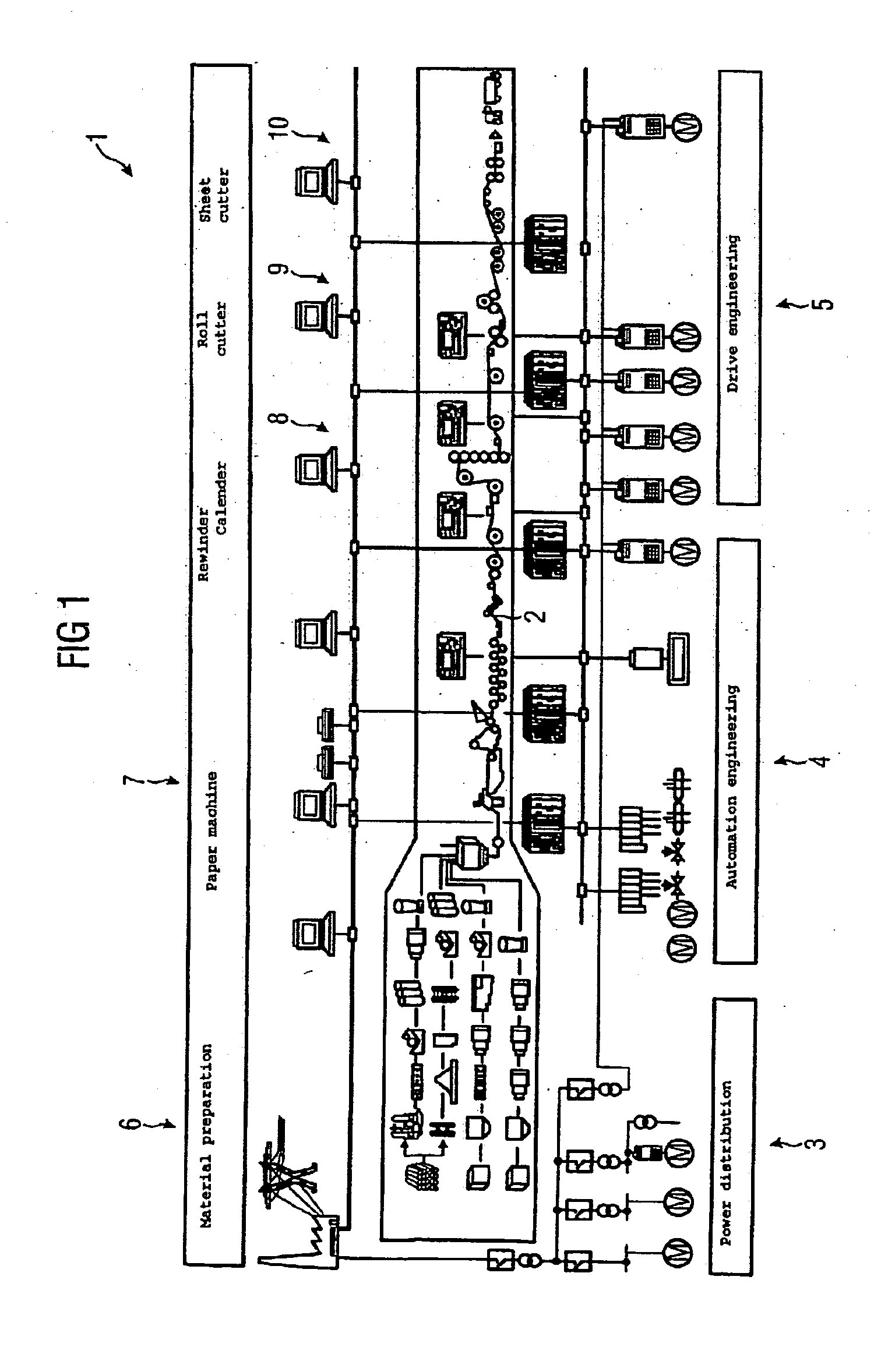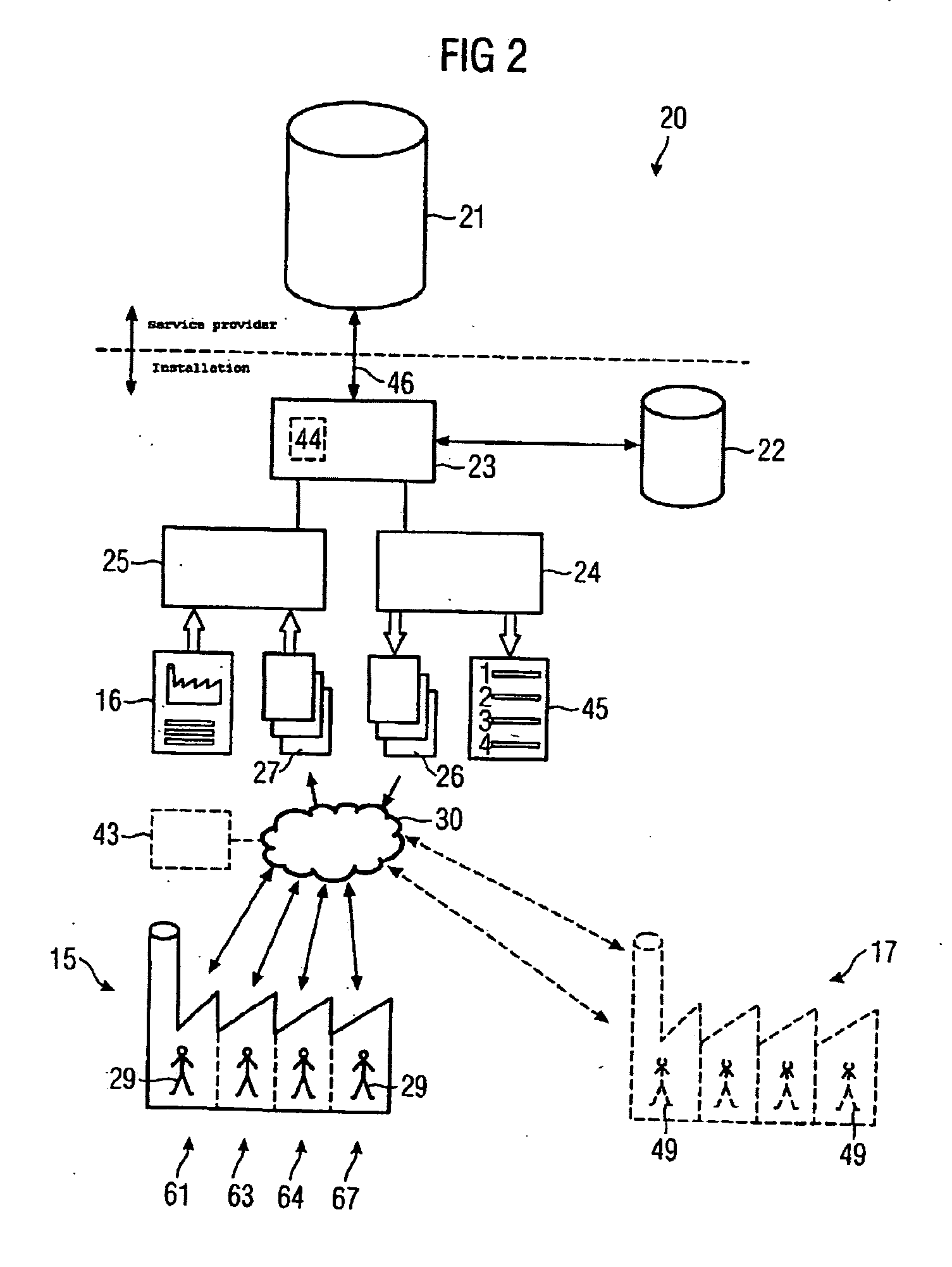Method and device for determining the causes of malfunctions and performance limits in installations
a technology which is applied in the direction of instruments, testing/monitoring control systems, nuclear elements, etc., can solve the problems of difficult to determine the causes of malfunction and performance limit factors, difficult to assess the technical state of their installation, and increasingly complex technical installations. , to achieve the effect of reducing the number of malfunctions, and early identification of performance limit and disruptive factors
- Summary
- Abstract
- Description
- Claims
- Application Information
AI Technical Summary
Benefits of technology
Problems solved by technology
Method used
Image
Examples
Embodiment Construction
[0037]FIG. 1 shows a simplified diagram of an installation 1 for producing a continuous paper web 2. The unit 1 comprises the installation elements material preparation 6, paper machine 7, rewinder / calender 8, roll cutter 9 and sheet cutter 10. All these installation elements include components for power distribution 3, automation engineering 4 and drive engineering 5. Overall the installation 1 is therefore a complex system comprising an extremely diverse range of very different, interacting, technical devices. The complex interactions of the various installation elements and devices means that functional chains between the various installation elements are difficult to find, it is difficult for an installation operator to determine malfunctions and performance limits and the technical state of the installation is difficult to assess.
[0038]FIG. 2 shows a claimed device 20 for determining causes of malfunctions and performance limits in an installation 15. The installation has the ...
PUM
 Login to View More
Login to View More Abstract
Description
Claims
Application Information
 Login to View More
Login to View More - R&D
- Intellectual Property
- Life Sciences
- Materials
- Tech Scout
- Unparalleled Data Quality
- Higher Quality Content
- 60% Fewer Hallucinations
Browse by: Latest US Patents, China's latest patents, Technical Efficacy Thesaurus, Application Domain, Technology Topic, Popular Technical Reports.
© 2025 PatSnap. All rights reserved.Legal|Privacy policy|Modern Slavery Act Transparency Statement|Sitemap|About US| Contact US: help@patsnap.com



